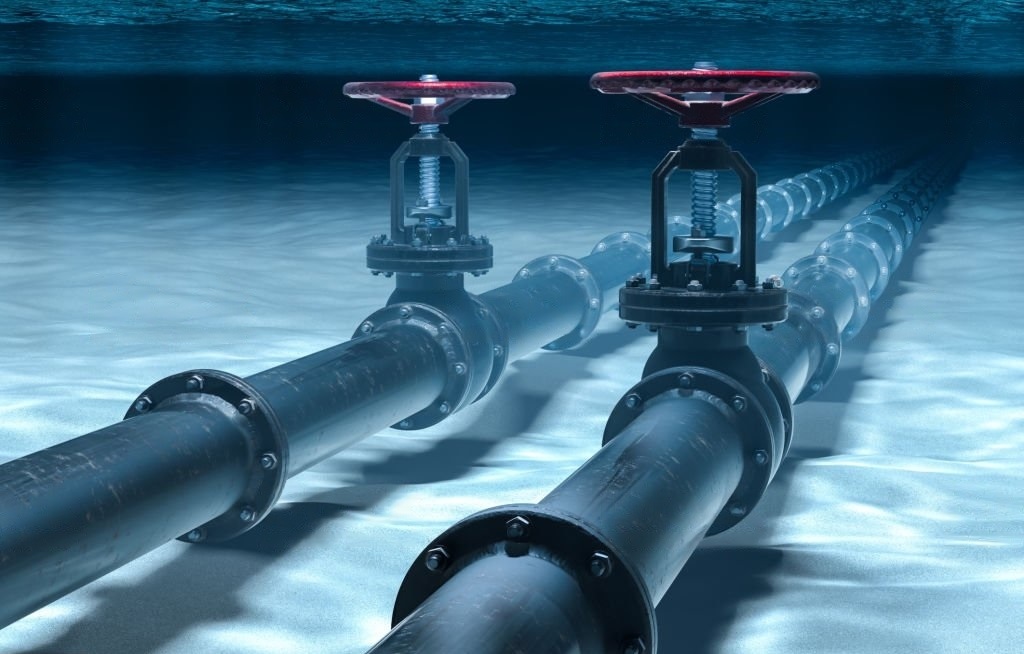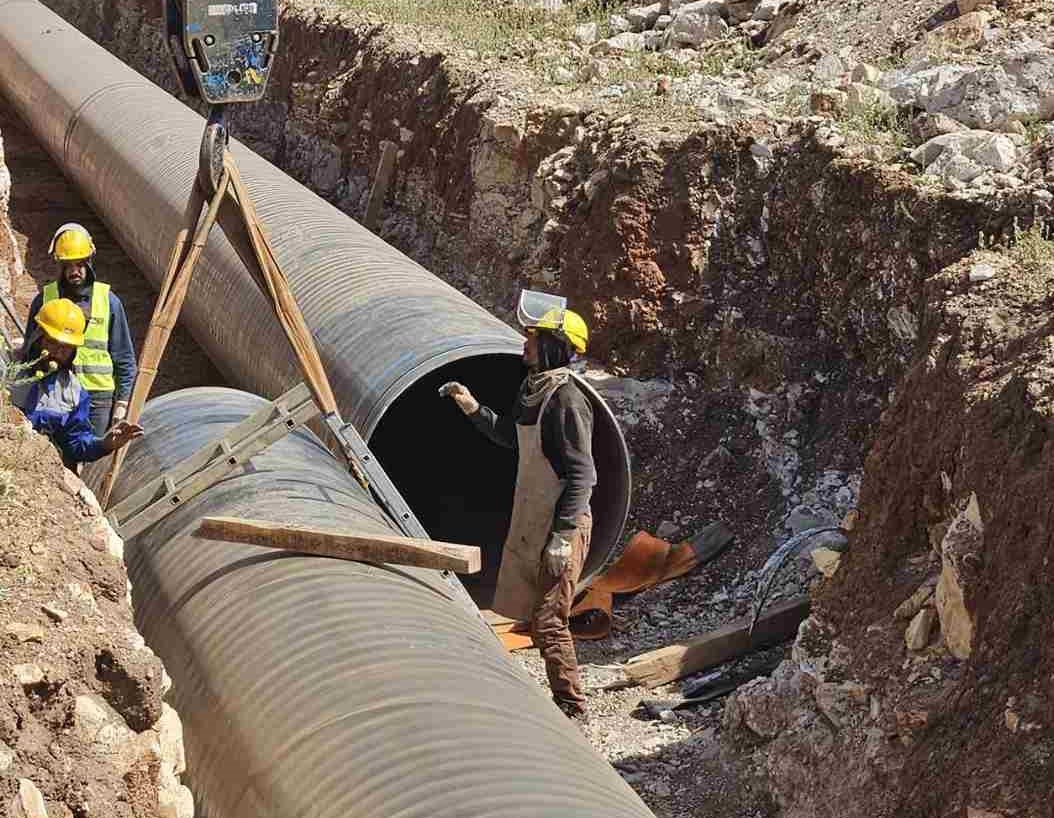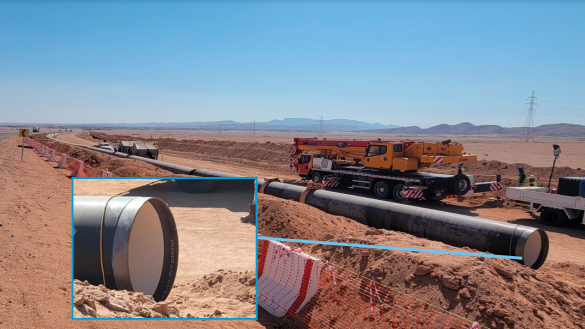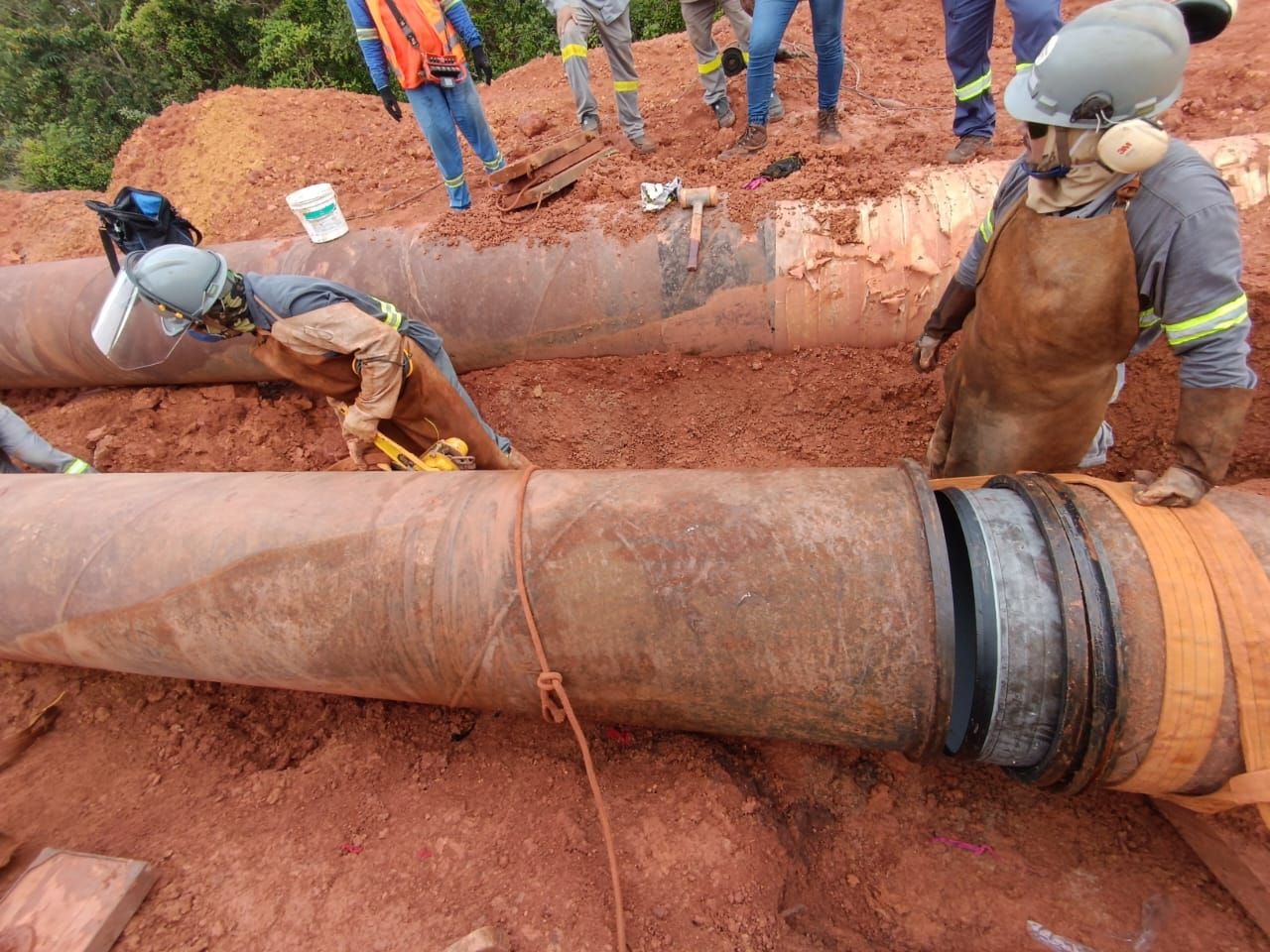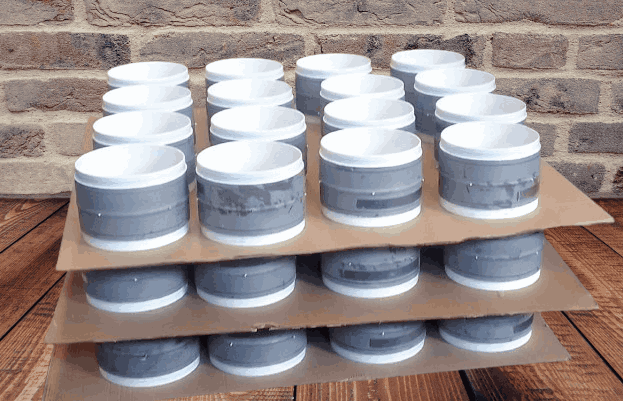By delivering oil and gas from offshore fields to onshore processing facilities, offshore pipeline systems help meet the world’s energy needs. Extreme weather, corrosive marine environments, and high-pressure depths affect these pipes. Girth weld coating is essential for pipeline integrity and lifetime.
Girth weld coating protects pipeline joints. This layer blocks corrosive elements and moisture. Due to the harsh and volatile offshore environment, offshore pipeline projects require special considerations.
Read more: Field Inspection Techniques For Girth Weld Coating.
Girth Weld Coating
Girth weld coating is essential for maintaining the quality and longevity of pipelines in various industries, such as petrochemicals, water distribution, and oil and gas. It entails coating the girth welds, or pipe weld joints, with a protective coating substance.
The type of pipeline, the operating circumstances, and the environment all play a role in determining the best girth weld coating. Three-layer polyethylene (3LPE), three-layer polypropylene (3LPP), liquid epoxies, polyurethane, and others, such as coal tar enamel and asphalt enamel, are common forms of girth weld coatings.
Regarding corrosion resistance, adhesion strength, flexibility, chemical resistance, UV resistance, and temperature resistance, each type of coating has unique qualities and benefits.
Importance of Girth Weld Coating in Offshore Pipeline Installations
Girth weld coating pipeline installation has so many benefits, such as:
Protection From Corrosion
Girth welds are pipeline corrosion spots. Offshore corrosion is accelerated by saltwater, moisture, and harsh weather. Girth weld coating prevents corrosive substances from accessing the pipeline surface, decreasing corrosion-related failures.
Structural Strength
Offshore pipelines face mechanical loads, pressure variations, and external factors. A suitable girth weld coating strengthens and protects the welds. This ensures the pipeline can survive offshore operations and remain functional over time.
Preventing Leaks and Failures
Unprotected girth welds can leak or fail because of flaws and discontinuities. Coating the girth welds seals defects and prevents leaks. Girth weld coating prevents catastrophic failures in offshore pipeline systems by keeping corrosive substances from entering.
Cost Reductions
Over the offshore pipeline’s lifetime, good girth weld coating can save money. Reduce maintenance and repair costs by reducing corrosion, leaks, and structural failures. The pipeline’s longer lifespan eliminates the need for frequent replacement or significant repairs, lowering operational costs and improving efficiency.
Unique Considerations in Offshore Pipeline Installations
Harsh Environment Challenges
Saltwater, waves, and harsh weather accelerate corrosion and degrade offshore pipeline coatings. Seawater and waves corrode the coating system. Marine settings require corrosion-resistant coatings. The coating must also endure dynamic offshore mechanical loads.
Deepwater Considerations
Hydrostatic pressure and installation intricacy make deepwater installations difficult. Due to higher pressure, coatings must be stronger and more water-resistant at deeper water depths.
Deepwater pipeline installation requires complicated methods like laying pipes on the seabed or employing underwater structures. Select coatings that can survive these installation methods and keep their integrity.
Installation Methods and Impact on Girth Weld Coating
Reel-lay or S-lay installation can affect girth weld coating. Reel-lay involves welding the pipeline onshore and spooling it onto a reel, while S-lay involves welding sections horizontally as they are dropped into the water.
Installation procedures can alter coating thickness, coverage, and adhesion. The coating application must match the installation procedure for uniform coating and excellent protection.
Pre-Installation Considerations
Numerous aspects should be examined before installation to ensure girth weld coating effectiveness. Coating material selection must include corrosion, mechanical stress, and compatibility with other pipeline coatings.
Cleaning and removing impurities is necessary for coating adherence. Before installation, the coating should be tested using non-destructive methods.
During Installation Considerations
Offshore girth weld coating requires a precise application. Wind, waves, and limited access offshore can affect the coating. Wind speed, temperature, and humidity must be considered achieving equal coating thickness and coverage.
Cathodic protection systems should be integrated with girth weld coating for pipeline corrosion protection.
Post-Installation Considerations
Girth weld coatings need constant care and monitoring to last. The coating should be inspected regularly to detect corrosion or deterioration.
Coating flaws should be repaired and maintained immediately. Sacrificial anodes and impressed current devices help prevent coating deterioration and corrosion.
Case Study
In 2016, a major oil and gas company planned to install a new offshore pipeline. The pipeline would be located in a harsh marine environment, and the company was concerned about the potential for corrosion. The company decided to use a thick, high-performance coating on the girth welds of the pipeline.
The coating was applied using a specialized girth welding application method that ensured that it was applied evenly and thoroughly. The pipeline has been in operation for several years now, and there have been no problems with corrosion at the girth welds.
Conclusion
Girth weld coating presents distinct considerations for specialist solutions in offshore pipeline projects. Adverse environmental conditions, such as exposure to seawater, waves, and marine vegetation, severely hamper the integrity of girth welds. However, the protection and longevity of girth welds can be improved by using the right coating materials and cutting-edge technologies as high-performance epoxy coatings and fusion-bonded epoxy.
We hope you may like our blog: “Girth Weld Coating in Offshore Pipeline Installations: Unique Considerations”, if yes then visit us for more.
FAQs
Why is it crucial for pipeline installations offshore?
The harsh environmental elements that offshore pipes are subject to include seawater, currents, waves, and sediments. Because of how quickly these circumstances can cause corrosion and other pipeline damage, girth weld coating is even more crucial in offshore installations.
When should girth weld coating be checked over and updated?
The type of coating, the surrounding conditions, and the pipeline’s age all influence how frequently girth weld coating needs to be inspected and renewed. However, it is typically advised to examine and reapply girth weld coating at least once every five to ten years.
What negative effects would there be if girth weld coating was not used?
The pipeline’s welded connections will be vulnerable to corrosion and other types of damage if girth weld coating is not utilized. Leaks from this could result in harming the environment and cost money.
What are different type of metal coating?
The various metal coating currently in use are anodizing, powder coating, PVD coatings, ceramic coatings, and organic coatings. Learn in detail here.

